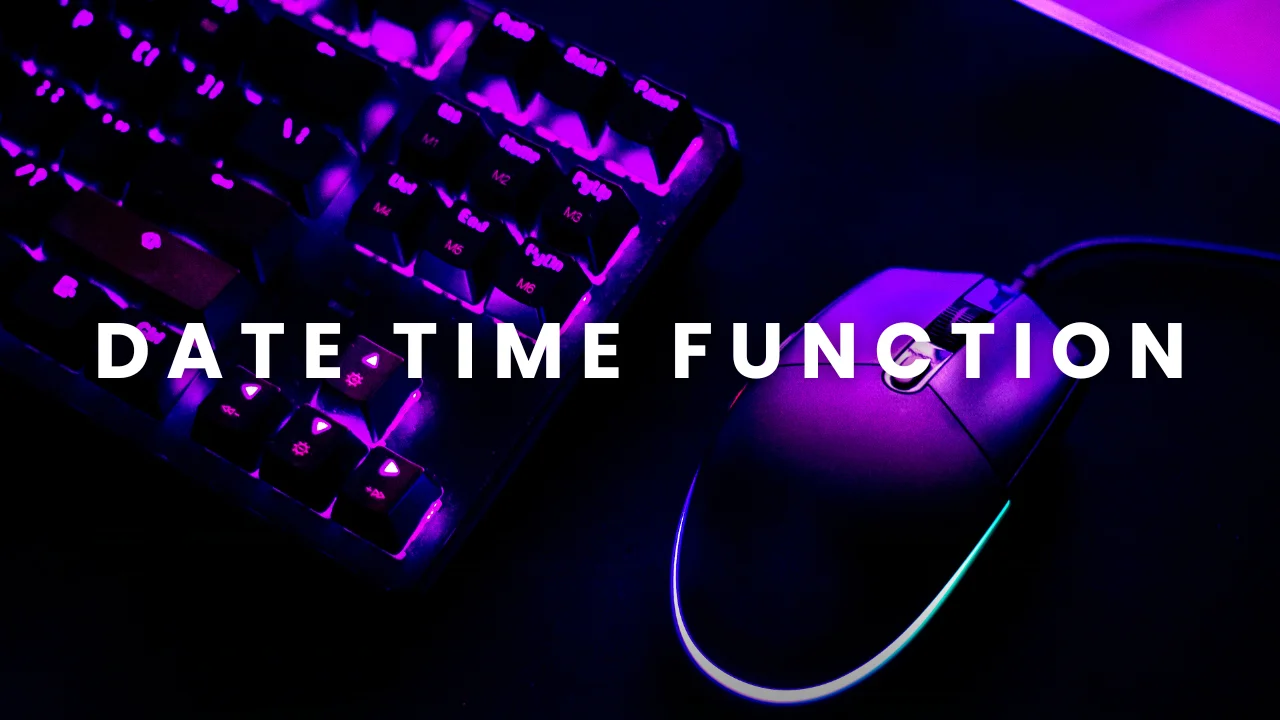
Exploring Date & Time Functions
In JavaScript, a "date time function" refers to any function or method related to handling dates and times. This includes functions for creating date objects, retrieving specific components of a date (such as the year, month, day, hour, minute, second), formatting dates, performing arithmetic operations with dates (like adding or subtracting time), and comparing dates.
Date and time functions in JavaScript are vital for managing, manipulating, and displaying dates and times in web applications. Here's why they're important:
Handling Time-sensitive Data : Date and time functions allow developers to work with time-sensitive data, such as event scheduling, appointments, deadlines, and time-based notifications.
User Interaction : Date and time functions enable developers to create interactive features that involve dates and times, such as calendars, date pickers, countdowns, and timers.
Localization and Internationalization : JavaScript's date and time functions support localization and internationalization, allowing developers to format dates and times according to different languages, regions, and cultural conventions.
Time Zone Management : Date and time functions support time zone management, allowing developers to work with dates and times in different time zones accurately.
Cross-platform Compatibility : JavaScript's date and time functions ensure cross-platform compatibility, allowing developers to create date-related features that work consistently across different web browsers and operating systems.
| Function | Description |
|---|---|
| new Date(): | Creates a new Date object representing the current date and time. |
| Date(year, monthIndex [, day [, hour [, minutes [, seconds [, milliseconds]]]]]): | Creates a new Date object with the specified components. |
| Date.parse(): | Parses a date string and returns the number of milliseconds since January 1, 1970 (UTC). |
| Date.UTC(): | Returns the number of milliseconds since January 1, 1970 (UTC) for a specified date and time. |
| getDate(): | Returns the day of the month (1-31) for the specified date. |
| getDay(): | Returns the day of the week (0-6) for the specified date (Sunday is 0). |
| getFullYear(): | Returns the year (4 digits) for the specified date. |
| getHours(): | Returns the hour (0-23) in the specified date. |
| getMilliseconds(): | Returns the milliseconds (0-999) in the specified date. |
| getMinutes(): | Returns the minutes (0-59) in the specified date. |
| getMonth(): | Returns the month (0-11) for the specified date. |
| getSeconds(): | Returns the seconds (0-59) in the specified date. |
| getTime(): | Returns the number of milliseconds since January 1, 1970 (UTC) for the specified date. |
| getTimezoneOffset(): | Returns the difference in minutes between the local time zone and UTC. |
| getUTCDate(), getUTCDay() | Similar to their non-UTC counterparts but return values in UTC time. |
| setDate(), setFullYear(), setHours(): | Sets the respective date components of a Date object. |
| setUTCDate(), setUTCFullYear(), setUTCHours(): | Similar to their non-UTC counterparts but sets values in UTC time. |
| toDateString(): | Returns a human-readable string representing the date. |
| toISOString(): | Returns a string in ISO format (YYYY-MM-DDTHH:mm:ss.sssZ). |
| toJSON(): | Returns a string in JSON format (same as toISOString()). |
| toLocaleDateString(), toLocaleString(): | Returns a string representing the date and time in a locale-specific format. |
| toString(): | Returns a string representing the date and time. |
| UTC(): | Returns the number of milliseconds since January 1, 1970 (UTC) for a specified date and time. |
| valueOf(): | Returns the primitive value of a Date object (the number of milliseconds since January 1, 1970 UTC). |
Date and time functions are indispensable in JavaScript for a wide range of applications, including scheduling, user interaction, data analysis, localization, validation, time zone management, event synchronization, and more. Their importance extends across various domains, making JavaScript a versatile language for developing date and time-sensitive web applications.